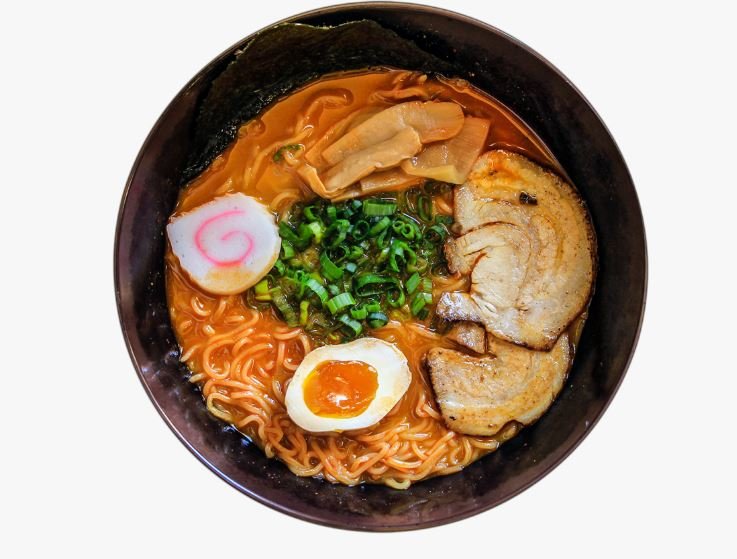Delight of Japanese Ramen and Chewy Noodles

The Origins of Ramen and Chewy Noodles
Ramen and Chewy Noodles is more than just a dish; it’s a cultural phenomenon that has captured the hearts and taste buds of food lovers worldwide. Among its many components, the chewy noodles are perhaps the most beloved, adding a unique texture and experience to every bowl. This blog delves into the intricate world of Japanese ramen, with a special focus on the art of creating the perfect chewy noodle.
Best Place to eat chewy ramen noddle in Toronto:
2. Kameen Ramen
3. Kinton Ramen
4. Kenzo Ramen
Ramen’s origins are often debated, but it is generally believed to have been inspired by Chinese wheat noodles brought to Japan in the late 19th century. Over the years, Japan has made ramen its own, creating a variety of regional styles and flavors. Today, ramen is a staple in Japanese cuisine, enjoyed by people of all ages.
The Essential Elements of Ramen
A traditional bowl of ramen consists of several key elements:
- Broth: The foundation of any ramen dish, broths can be made from pork, chicken, beef, or vegetables, and are often seasoned with soy sauce, miso, or salt.
- Noodles: Ramen noodles are typically made from wheat flour, water, salt, and kansui (an alkaline mineral water). Kansui is what gives ramen noodles their characteristic chewiness and yellow color.
- Toppings: Common toppings include chashu (braised pork belly), menma (fermented bamboo shoots), nori (seaweed), boiled eggs, and green onions.
- Seasoning: The final touch that enhances the flavor of the broth, ranging from soy sauce and miso to spicy oils and garlic.
The Art of Chewy Noodles
Ingredients and Preparation
The chewiness of ramen noodles is what sets them apart from other types of noodles. This unique texture is achieved through the use of kansui. Here’s a closer look at the ingredients and preparation process:
- Wheat Flour: The base ingredient, chosen for its gluten content which gives the noodles their structure.
- Water: Hydrates the flour and activates the gluten.
- Salt: Enhances the flavor and strengthens the dough.
- Kansui: A combination of potassium carbonate and sodium carbonate, kansui raises the pH level of the dough, resulting in a firmer and chewier texture.
Making the Dough – Ramen and Chewy Noodles
- Mixing: The flour, water, salt, and kansui are mixed together to form a dough. This process requires precision, as the right balance of ingredients is crucial for achieving the desired texture.
- Resting: The dough is allowed to rest, which helps to develop the gluten network, contributing to the chewiness.
- Rolling and Cutting: After resting, the dough is rolled out and cut into thin strands. The thickness of the noodles can vary depending on the style of ramen being prepared.
Cooking the Noodles
Cooking ramen noodles is a delicate process. They are typically boiled for a short period, usually between 1 to 2 minutes. Overcooking can lead to a loss of their characteristic chewiness, while undercooking can make them too firm. Timing is key to achieving the perfect texture.
The Experience of Eating Ramen
The joy of eating ramen goes beyond just the taste. It’s a sensory experience that involves sight, smell, and sound. The sight of a beautifully arranged bowl, the aroma of the broth, and the sound of slurping all contribute to the overall enjoyment.
The Importance of Slurping
In Japanese culture, slurping your noodles is not only acceptable but encouraged. It’s believed that slurping enhances the flavor by aerating the broth and noodles, and it also helps to cool down the hot noodles. For many, the act of slurping adds to the immersive experience of eating ramen.
Regional Variations
Japan boasts numerous regional ramen styles, each with its own unique twist on the classic dish. Here are a few notable examples:
- Tonkotsu Ramen (Kyushu): Known for its rich and creamy pork bone broth and thin, straight noodles.
- Shoyu Ramen (Tokyo): Features a clear, soy sauce-based broth with curly noodles.
- Miso Ramen (Hokkaido): Distinguished by its hearty miso broth and thick, wavy noodles.
- Shio Ramen (Hakata): Characterized by its light and salty broth, often accompanied by thinner noodles.
Conclusion
The world of Japanese ramen is vast and varied, with each bowl telling a story of tradition, innovation, and culinary artistry. At the heart of this beloved dish are the chewy noodles, a testament to the meticulous craft of ramen making. Whether you’re enjoying a steaming bowl at a bustling ramen shop in Tokyo or savoring a homemade creation, the delight of ramen lies in its ability to bring comfort and joy with every bite. So next time you find yourself craving something warm and satisfying, remember that a bowl of ramen is more than just a meal – it’s an experience to be cherished.
